ChirpStack is an open-source LoRaWAN Network Server that enables communication between LoRaWAN devices and applications. It has a complete set of components, including a Network Server, Gateway Bridge, and Application Server, that can be used to set up and manage a LoRaWAN network.
LoRaWAN is a network layer protocol maintained by the LoRa Alliance to manage data communication over wireless LoRa networks.
ChirpStack offers a comprehensive LoRaWAN development toolkit encompassing all of the essential components of a LoRaWAN network, except for the nodes themselves. This software suite provides a robust solution for creating and managing LoRaWAN networks.
Here’s a summary of its core components:
1. ChirpStack Concentratord: handles the communication between devices (nodes) and gateway hardware. It manages data transmission from the LoRaWAN nodes to the gateways, optimizing the reception and routing of data.
2. ChirpStack Gateway Bridge: acts as an intermediary, facilitating seamless communication between the gateway hardware (specifically, the ChirpStack Concentratord) and the network server. It ensures proper data management and transmission for an effective network operation.
3. ChirpStack Network Server: manages the entire network, including activation of the devices, data routing, and communication to the nodes. It’s pivotal in maintaining clear, two-way communication within the LoRaWAN network.
4. ChirpStack Application Server: offers a crucial link between the network server and external applications or services. It manages data processing, storage, and integration with databases and dashboards, facilitating seamless interaction between the LoRaWAN network and external applications.
Together, these components form a comprehensive LoRaWAN ecosystem, covering the entire spectrum — device-to-gateway communication, network management, device activation, message transmission, and integration with external applications.
ChirpStack offers a strong foundation for building and operating LoRaWAN networks, enabling efficient and secure communication for a range of Internet-of-things (IoT) applications.
Let’s consider each component in more detail.
ChirpStack Concentratord
This ChirpStack component serves as an open-source LoRa concentrator daemon. Its primary function is to efficiently manage,and process data transmitted by LoRa devices, commonly known as nodes. It serves as an intermediary that adeptly handles the reception of data originating from multiple LoRa nodes and orchestrates a seamless transmission to the respective gateways within the LoRa network.
By harnessing a ZeroMQ-based API, ChirpStack Concentratord establishes a reliable communication channel that enables smooth interaction between LoRa nodes and gateway hardware. Its features include data aggregation, time synchronization, and error correction — ensuring the accurate and optimized routing of information from the nodes to the corresponding gateways.
ChirpStack Concentratord is integral in enhancing the overall efficiency and reliability of LoRa-based communication systems. Its dedicated focus on managing data flow from LoRa nodes to gateways showcases its significance as a critical component within the intricate network architecture.
The ChirpStack Gateway Bridge
This Gateway Bridge of the LoRaWAN ecosystem is a vital intermediary, facilitating communication between the LoRaWAN gateway and the Network Server. It translates data from the Semtech UDP Packet Forwarder or Semtech Basics Station into MQTT format, ensuring compatibility and cohesion.
The following Packet Forwarder backends are provided:
1. ChirpStack Concentratord
2. Semtech UDP Packet Forwarder
3. Basic Station Packet Forwarder
Distinguished by its open-source nature, the ChirpStack Gateway Bridge encapsulates the principles of collaboration and innovation, underscoring its adaptability to diverse environments. This versatile bridge can be integrated within the gateway hardware or hosted in the cloud infrastructure, offering flexibility to network operators.
The following integrations are offered:
- Generic MQTT broker
- GCP Cloud IoT Core MQTT Bridge
- Azure IoT Hub MQTT Bridge
By converting incoming messages into MQTT, the ChirpStack Gateway Bridge essentially harmonizes the distinct components of the LoRaWAN architecture. Its capacity to convert and transmit data is critical to ensuring effective communication between the gateway and the Network Server.
The ChirpStack Network Server
At the heart of LoRaWAN infrastructure lies the ChirpStack Network Server, a sophisticated orchestrator responsible for coordinating between the network and its myriad of connected devices. This integral component assumes the role of an astute conductor, overseeing and regulating the intricate symphony of data exchange.
The ChirpStack Network Server plays a custodial role in data integrity. It employs encryption and decryption protocols to safeguard the confidentiality of transmitted messages across the network. Additionally, the server directs these messages to their designated endpoints, ensuring an efficient and error-free routing process.
The Network Server also offers a choice between cloud-based deployment or local instantiation, granting stakeholders the autonomy to implement it according to their unique operational requisites.
It’s worth noting that ChirpStack embraces an open-source ethos, accompanied by an intuitively designed web interface. Network administrators are given comprehensive management capabilities, device oversight, network creation, and integration with prominent cloud services.
Like a nerve center, this interface empowers stakeholders with centralized control over their LoRaWAN ecosystem.
The ChirpStack Application Server
The Application Server is a pivotal gateway, facilitating the interaction between external applications and the intricate LoRaWAN network. It has a multi-faceted role that starts with receiving data from the Network Server. Subsequently, it processes data, priming the information for onward transmission to the designated application.
Along with its data-centric role, the Application Server also shoulders the responsibility of device management, an essential task within the LoRaWAN ecosystem. It coordinates device provisioning, activation, and monitoring for a meticulously managed network infrastructure.
Additionally, the server functions as a nexus for application integration, offering a pipe/tubular structure through which data is conveyed to diverse external applications. Its role extends to data storage, where it securely archives crucial information, forming a repository for historical analysis and reference.
The ChirpStack Application Server’s adaptability is notable as it provides deployment options for cloud and local server environments. This flexibility ensures that stakeholders can tailor the server’s deployment in alignment with their specific operational context.
Conclusion
Creating a LoRaWAN gateway using ChirpStack OS is mainly about the software. One option is to set up ChirpStack OS on the gateway hardware, along with a Lora concentrator for communication. An easier alternative is to use a pre-built gateway and add the ChirpStack Gateway Bridge software to link it with the ChirpStack Network Server.
Remember, it’s the software that’s crucial. The hardware mostly revolves around having a Lora concentrator for the gateway to work effectively.
You may also like:
Filed Under: Tutorials






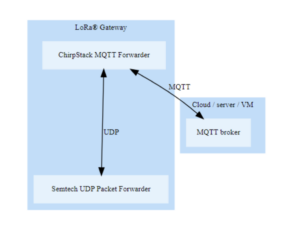
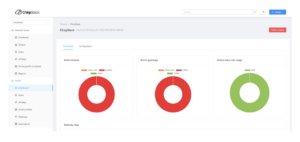






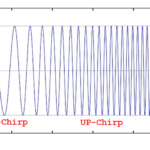
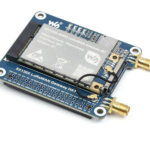
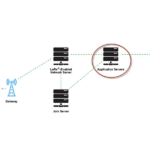

Questions related to this article?
👉Ask and discuss on Electro-Tech-Online.com and EDAboard.com forums.
Tell Us What You Think!!
You must be logged in to post a comment.